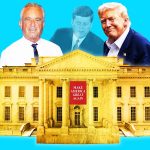Unlock the Editor’s Digest for free
Roula Khalaf, Editor of the FT, selects her favourite stories in this weekly newsletter.
Investor appetite for gold remains undeterred by prices that have soared to record highs against a backdrop of geopolitical instability and weakening confidence in the US dollar.
Global gold demand rose 3 per cent year on year in the three months to June, a period when the price of the haven asset reached a record of $3,500 per troy ounce and remained at elevated levels, the World Gold Council, which represents gold miners, said in its quarterly report on Thursday.
Inflows into gold exchange traded funds remained strong, with global demand during the first half of the year at its highest since 2020. Overall investment demand — including the buying of ETFs, gold bars and gold coins — rose 78 per cent year on year.
Both buying and prices looked set to remain elevated, the group said.
“To be really bearish on gold you have to think we’ll get an outbreak of sanity and co-operation from major geopolitical leaders. And the world seems too polarised to me for that,” said John Reade, senior market strategist at the WGC.
“The global investor is concerned”, he added, especially those in emerging markets including China.
Gold has been on a furious rally this year, climbing to a series of record highs as intensifying geopolitical tensions and questions about the impact of a swath of US tariffs prompted investors to pour into what is seen as a haven asset.

The metal, which was trading at about $3,300 per troy ounce on Wednesday, has overtaken the euro as the world’s second most important reserve asset for central banks, the European Central Bank said in June.
Central banks continued to buy gold during the second quarter, though at a slower pace than previously, said the WGC. Buying was at its lowest level since 2022, but remained 41 per cent higher than the quarterly average between 2010 and 2021, the group said.
Higher prices were likely to have damped the pace of central bank buying, which nevertheless “remains at significantly elevated levels due to ongoing economic and geopolitical uncertainty”, with buying expected to continue over the next 12 months, said the report.
“I don’t see reasons for why central banks would stop buying,” with purchases likely to “spread to more central banks”, said Philip Diehl, president of US Money Reserve, a precious metals trader.
Growing “doubts” about American economic and geopolitical leadership were “undermining” confidence in the US dollar, and it was “inevitable” that central banks would want to hedge their exposure to the currency with gold, said Diehl.
Reade said there was no evidence that countries had been taking gold stocks out of the US and moving them to domestic storage facilities, as some came under pressure to do. Countries such as Germany and Italy rely on the New York Federal Reserve in Manhattan to store some of their bullion.
However, there had been some “unwinding” of the rush of gold into the US seen at the start of this year, which happened amid concerns that the precious metal might become subject to tariffs, said Reade.
The US administration has not put import taxes on bullion. But the White House’s imposition of a broad array of tariffs on metals, including aluminium and steel, has knocked confidence and created an environment in which companies have adopted a “wait and see” approach to investment decisions, mining executives and analysts have said in recent weeks.
While Chinese investors poured huge sums into gold ETFs during the first quarter of the year, as the US-Sino trade war fuelled fears of a recession, such buying had since slowed significantly, said the WGC.








No Comment! Be the first one.